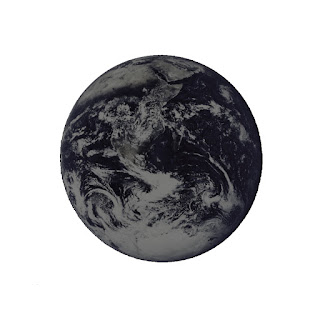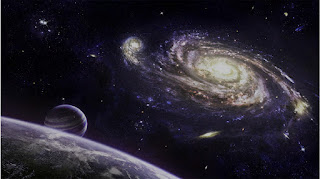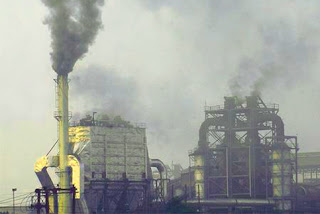A large portion of what's thought about the main strong bodies in the solar system originates from meteorites. These are pieces of shake and-metal from space that intermittently crash into Earth. Specialists regularly examine a kind of these meteorites known as carbonaceous chondrites (KAR-bon-AY-shus KON-dytes). Researchers have suspected these rough lumps at first were a piece of space rocks.
Strikingly, their compound formula is nearly the same as the sun's. In the wake of evacuating the majority of the lightweight hydrogen and helium from the sun, you'd be left with heavier components, for example, carbon and sodium. What's more, they'd exist in similar proportions found in these bits of space shake. Some of these components are radioactive. That implies they are insecure, always shedding warmth and some subatomic particles through a procedure known as radioactive rot.
The likeness between the formula of the sun and these shooting stars is vital. It recommends the principal space rocks advanced straightforwardly from the circle of gas and clean that existed just before the planets framed. That basic formula likewise recommends these stones framed within the sight of water and at generally low temperatures. How low? Around 150° Celsius (302° Fahrenheit).
It's difficult to clarify these characteristics without a moment's delay. The first space rocks may have been greater than around 20 kilometers (12 miles) over. There's no motivation to think they weren't. Provided that this is true, at that point the rot of radioactive components inside them would have made the stone more sizzling than 150 °C (302 °F).
Some planetary researchers have proposed that the space rocks were permeable. That implies they had bunches of gaps, to some degree taking after a wipe. Like a primitive pipes framework, water moving through those openings would have cooled the stone. In any case, that water likewise ought to have hauled a few components out of the stone. A while later, the stone's formula never again would be sunlike.
"It was a conundrum," notes Philip Bland. He is a planetary researcher at Curtin University of Technology in Perth, Australia.
Tasteless was running PC models on how those unique globs of ice and tidy could have compacted into strong shake. That is the point at which it hit him: What in the event that they weren't shake in any way?
"Right then and there, nothing has happened to compel those grains together to transform it into a stone," he says. This was simply something everybody had accepted would happen.
Tasteless contemplated that before they had an opportunity to swing to shake, warm from radioactive rot in these globs of clean would have dissolved any ice. The subsequent heavenly body would then turn into a gigantic glob of mud. What's more, that mud could hold little rough particles. Presently the irregularities wouldn't be stripped of a few components. What's more, these early space rocks could be any size — and generally cool.
Making mudballs
Bryan Travis works at the Planetary Science Institute in Los Alamos, N.M. He and Bland utilized a PC to mimic how these mud balls would have developed. Furthermore, streams driven by convection would have assumed a part.
Convection streams shape because of the rising and falling of material in a liquid or gas because of uneven temperatures. Such streams move fluid shake inside Earth's blisteringly hot mantle.
The group's new recreations demonstrated that these streams additionally would create in huge numbers of the mud balls. The streams would move warm into space. Following a few million years, a ball would have solidified totally, yielding the space rocks seen today.
"It nails the Catch 22," Bland says. He and Travis distributed this appraisal July 14 in Science Advances.
The new model could illuminate a few riddles about the formula of shooting stars found on Earth. It additionally may clarify why space rocks are not quite the same as comets, he says. Comets are more cold than rough. They tend to hang out more remote from the sun and may just have shaped later in the nearby planetary group's history. Assuming genuine, at that point there likewise would have been less radioactive warmth accessible to dissolve them.
Warmth streams (red) may have agitated inside a mud ball 200 kilometers (120 miles) wide, 2.4 million years after its ice dissolved, estimations appear. This ball has a convecting mantle (yellow) and a frosty outside layer (blue). In the long run the mass will solidify into a rough space rock.
P.A. Tasteless and B.J. Travis/Science Advances 2017
The new model additionally indicated contrasts in the space rocks. Some eventual sloppy completely through. Others would create centers of bigger grains, with an awesome mud sea on them.
That last situation could clarify space rocks as well as bodies prefer the diminutive person planet Ceres (SEER-eez). It is the biggest question in the space rock belt (a ring of shake that circles the sun between the circles of Mars and Jupiter). Analysts as of late examined Ceres with NASA's Dawn shuttle. It demonstrated that Ceres has a rough center.
Ceres may once have had a sea that has since vanished, says Edward Young. He is a planetary researcher at the University of California, Los Angeles, who was not associated with the new investigation. Vanishing on Ceres may have been something like what the group is portraying for every early space rock, he says.
Planetary researcher Brandon Johnson thinks the new model of mud-ball space rocks will motivate more research. Johnson works at Brown University in Providence, R.I. "I'm occupied with it myself," he says. "It bodes well and illustrates what may have been going on."

























